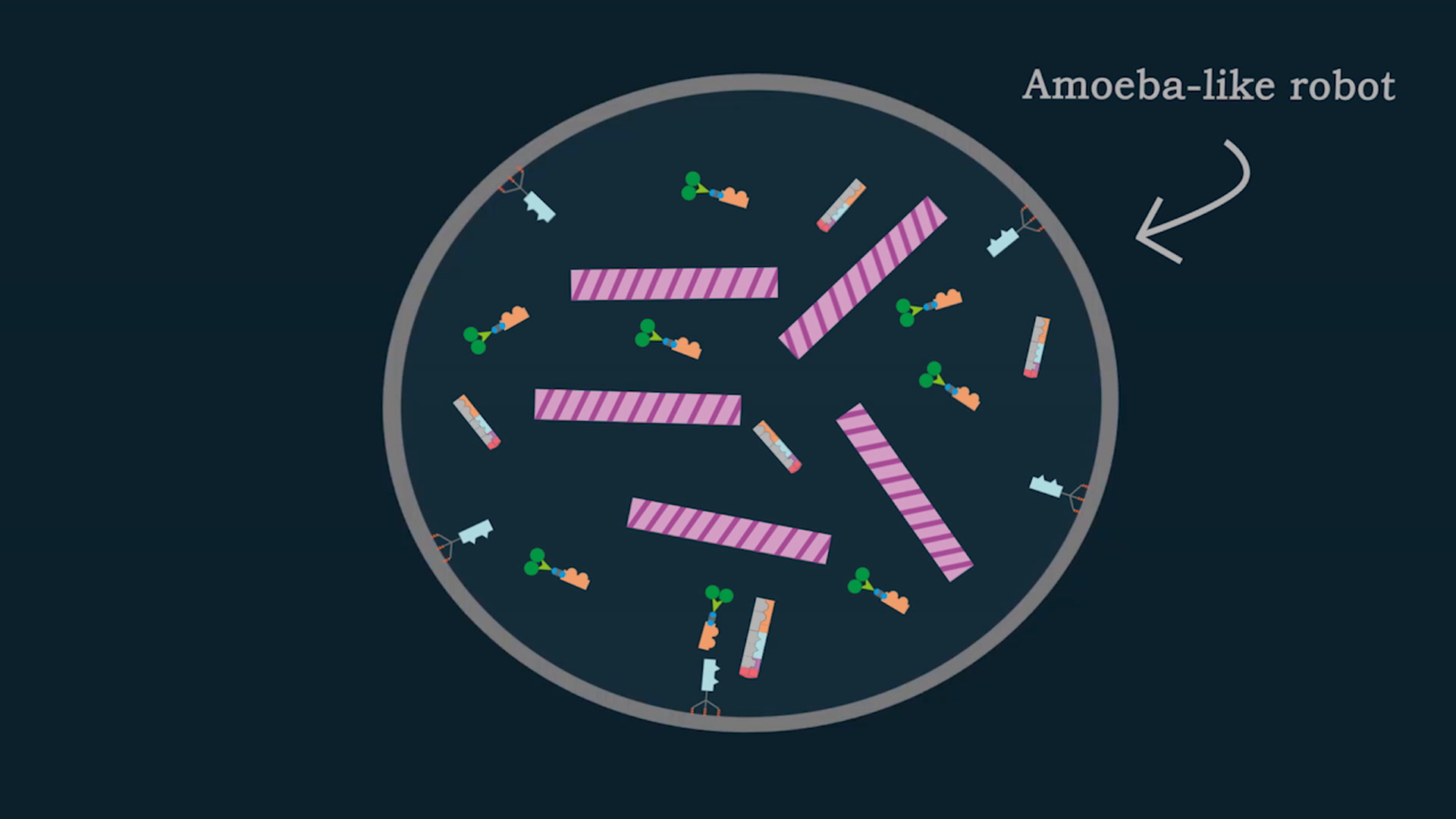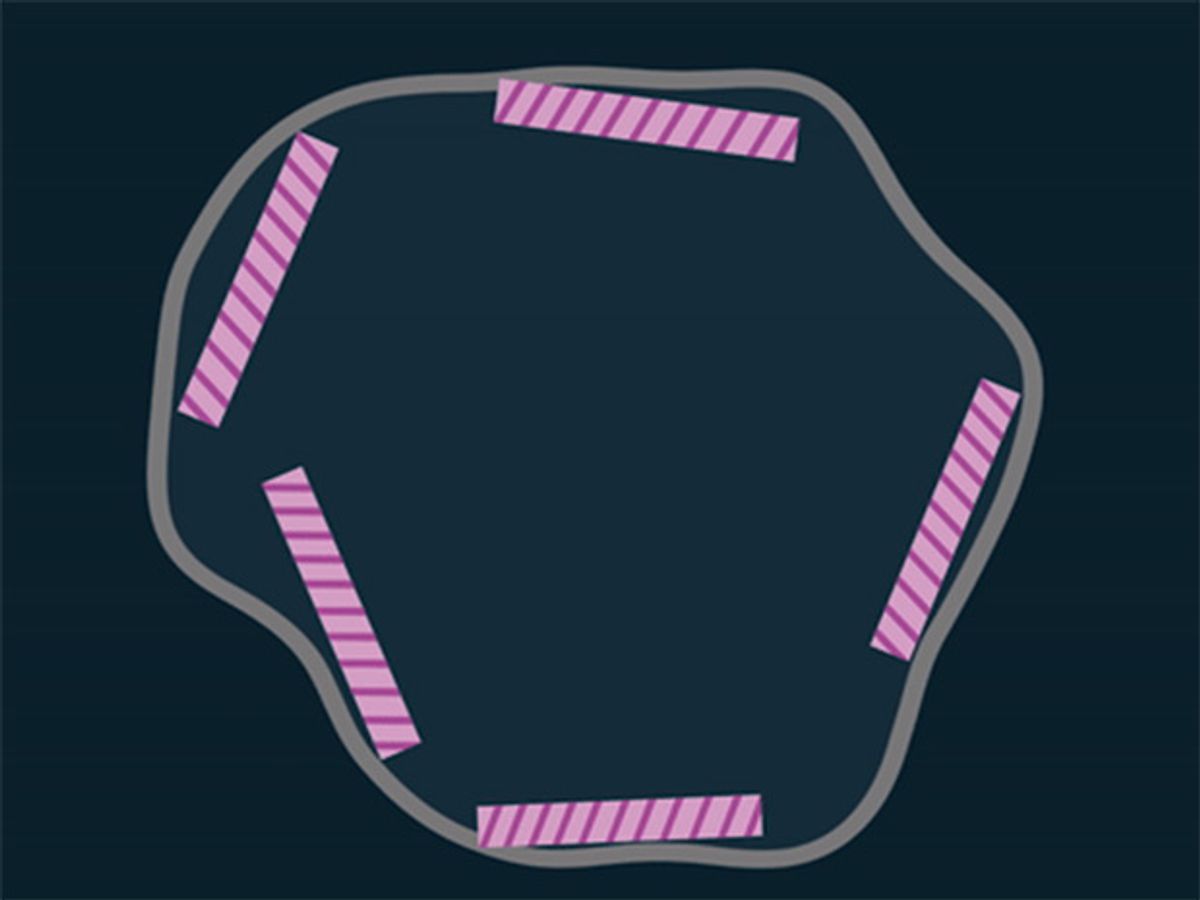
Living things: They’re most inspiring, but also difficult things to try to replicate in robotics. With that aim, researchers in Japan have managed to design a tiny robotic system that moves like a living cell. The scientists described the robot last week in the journal Science Robotics.
The system, called a molecular robot, is about the size and consistency of an amoeba. It is a fluid-filled sac containing only biological and chemical components—about 27 of them, says Shin-ichiro Nomura, a bioengineer at Tohoku University in Sendai, Japan and one of the robot’s inventors. The molecular components work in concert to stretch and change the shape of the sac, propelling it with cell-like motion through a fluid environment. The motion can be turned on and off with DNA signals that respond to light.
Other than puttering around, the amoeba-like robot can’t do much. But that’s the beauty of the invention, says Nomura. The bot serves as a vehicle to house whatever researchers can dream up: tiny computers, sensors, and even drugs. Outfitted with those tools, the system could then be used to explore the biomolecular environment. It could seek out toxins or check the surface of other cells or the content of a Petri dish.
Nomura and his colleagues have figured out a way to package and ship the tool as a kit so that other scientists can “play with the robots” and incorporate their own components, he says. He hopes the platform will be used to build increasingly complex molecular robots with controllable motility.
Ultimately, Nomura would like to see the robot function inside a cell. “That’s kind of a frontier,” says Nomura. A robot that can dive into a cell and its nucleus can act as a diagnostic, seeking out problems with cellular machinery. “It’s a little dreamy,” Nomura says, but notes that his robot can be reduced in size to less than one micrometer—small enough to fit inside a cell.
Researchers have developed many proof-of-concept micro- and nanoscale robots that can move and communicate within the body. Many of these tiny robots are made with biodegradable materials and are driven by magnetic, chemical, or ultrasonic forces.
Nomura’s molecular robot differs in that it is composed entirely of biological and chemical components, moves like a cell, and is controlled by DNA. Other molecular robots have been developed, but none with this kind of controllable motility, Nomura says.
It took about a year and half and 27 different chemical components to make the molecular bot, Nomura says. A lipid membrane serves as a the malleable robot body. Inside, special proteins bump into the membrane, causing it to change shape—kind of like bag being punched from the inside.
The punching only happens when key proteins called kinesins and microtubules connect to the membrane via anchor units. That connection is provided by light-sensitive DNA. When UV light shines on the robot, the light-sensitive DNA inside cleaves into a single strand. It can then latch onto the anchor units and the kinesin-microtubule structure, forming a bridge between them.
The microtubules, which are rigid, long structures, slide along the kinesin proteins with the help of adenosine triphosphate, or ATP—the molecule of intracellular energy transport. As they slide, they punch the bot’s outer membrane, causing it to change shape.

With this combination of molecules, Nomura and his colleagues succeeded in mimicking the movement of a cell. But if the thing is assembled solely with biological components and chemically powered by ATP, can we really call it a robot? “The definition of ‘robot’ is wide,” says Nomura. If something has a body and can sense and process information to carry out a function, it’s a robot, he says.
Robot or cell-bot, we look forward to seeing what engineers stick inside it.
Emily Waltz is a features editor at Spectrum covering power and energy. Prior to joining the staff in January 2024, Emily spent 18 years as a freelance journalist covering biotechnology, primarily for the Nature research journals and Spectrum. Her work has also appeared in Scientific American, Discover, Outside, and the New York Times. Emily has a master's degree from Columbia University Graduate School of Journalism and an undergraduate degree from Vanderbilt University. With every word she writes, Emily strives to say something true and useful. She posts on Twitter/X @EmWaltz and her portfolio can be found on her website.



